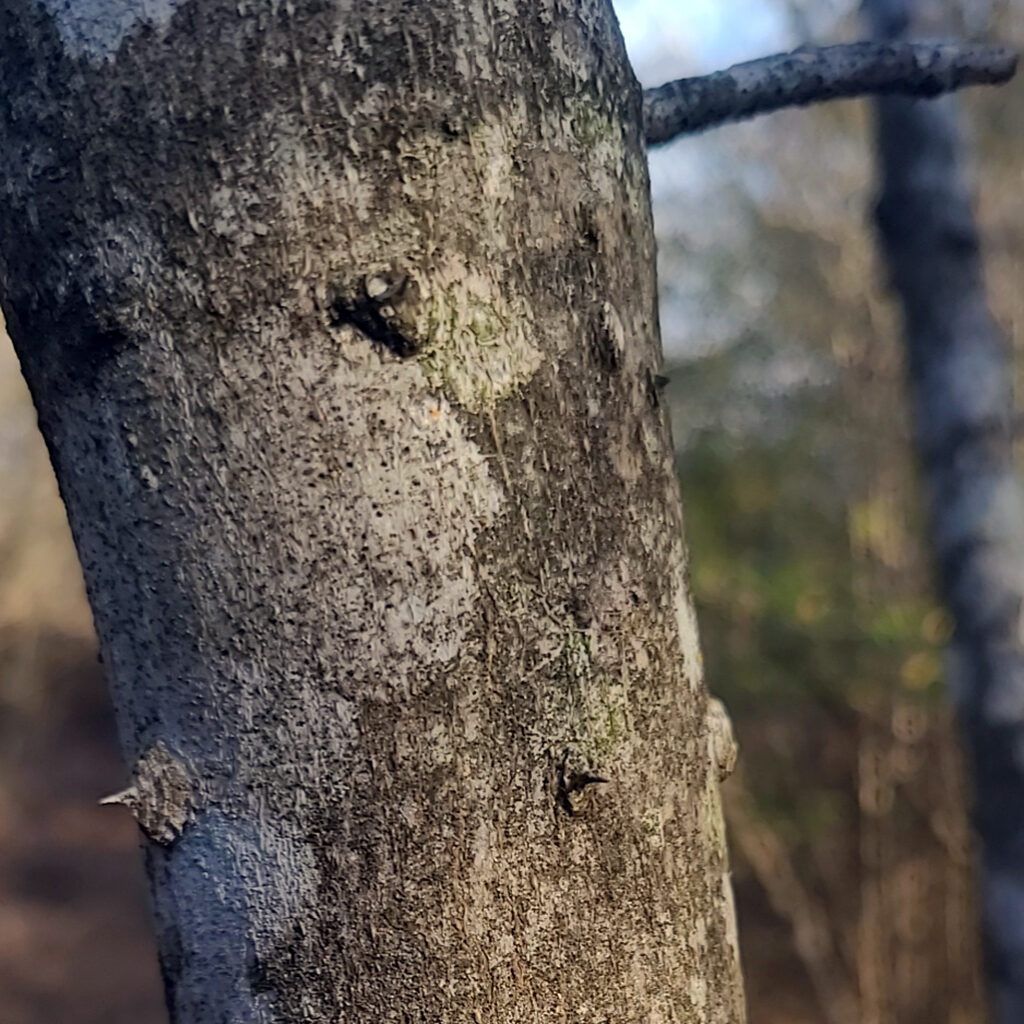Have you ever seen a prickly ash (Zanthoxylum americanum)? I bet you didn’t know that it’s rare to find this shrub growing so far southwest. We can thank our pollinators for spreading its seeds. Typically, you can find a variety of mammals nesting within its branches, including American Robins, Wood Thrushes, Bobwhite, Red-eyed Vireos, white-tailed deer, and others. Most of the bird species that nest here take advantage of its dense growth for protection from predators. The shrub also attracts several different species of butterflies during its flowering season.
The prickly ash is not only beneficial to wildlife but was once used by Native Americans and early European settlers for its healing properties. The bark, roots, leaves, and even ripened fruit contain chemicals that were used for medicines, including being chewed to treat toothaches. The bark treated colds, cramps, skin rashes, and other diseases while grinding the bark into powder treated ulcers, sores, and wounds. An infusion of the bark was also effective in treating fevers, headaches, and swollen joints. The fruit was used to treat coughs, sore throats, tonsillitis, and mouth sores. This plant was also used to treat cholera, hemorrhaging, kidney and heart issues, pneumonia, tuberculosis, and typhoid.
It has been recorded that a Native American Winnebago chief cured a trader of gonorrhea with the use of this shrub around 1766. In addition, the dried bark of the prickly ash was included in the U.S. Pharmacopeia from 1820 to 1926 when it was used to treat arthritis pain, and medicinal uses from this species were recorded in the National Formulary from 1916 to 1947. The many uses of this shrub by both wildlife and Native Americans are incredible!

The prickly ash received its genus name, Zanthoxylum, from two different Greek words referring to the yellow color of its roots. To identify this species, look for smooth, thin bark, which obtains gray blotches as it ages. Beneath the bark is a dense yellow-to-pale-brown wood, which produces a yellow dye. The leaves of this shrub are odd: pinnately compound, alternate, and deciduous. The flowering season runs from April to May before leaves arrive. The fruit of this shrub is red and grows on short stalks in clusters, giving off a lemony scent. You’ll find this shrub fruiting from July to October. The species can also be identified by the sharp thorns growing on the bark.
The prickly ash’s natural habitat consists of partially shaded areas, with rich dry-to-moist soil. It can also be found along riverbanks, fencerows, roadsides, and pastures.
The next time you’re hiking at the Nature Center and come across this species, take a moment to look for bird, insect, or even squirrel nests within its dense shrub. You never know what you might find while hiking!




